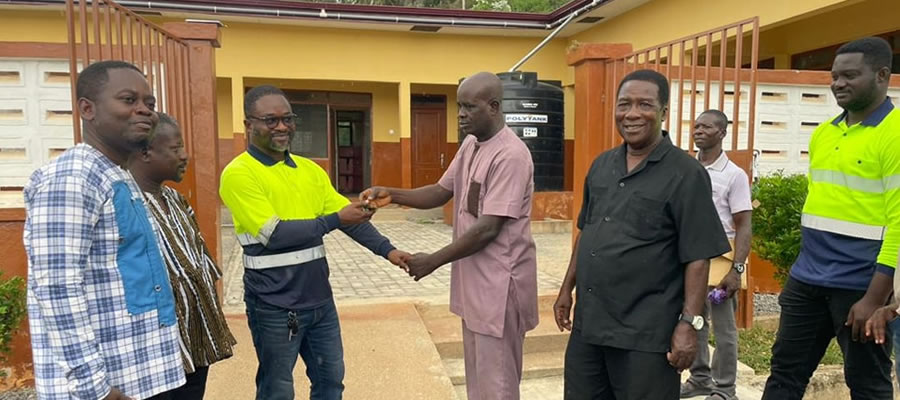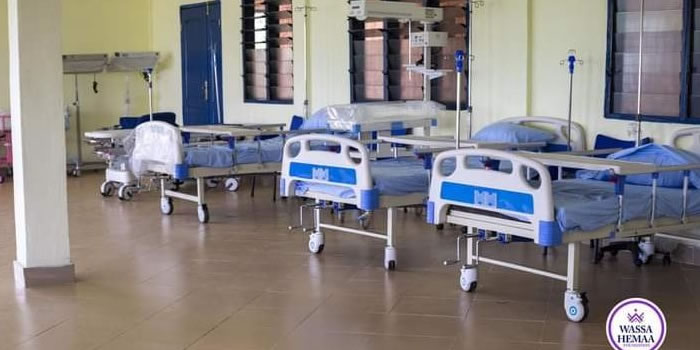

Introduction
Understanding the dynamics of households is fundamental to understanding the characteristics of units in social and economic planning. The size, composition, and structure of households are influenced by socio-economic, and demographic factors such as age at first marriage and birth, length of time spent in school, occupation, material or financial abilities, capabilities of parents and couples, fertility and mortality rates, and migration.
The total size of the population and its characteristics are, therefore, largely a reflection of what pertains within households. Households constitute important units in planning and as such knowledge of household structure, composition, and headship provides an important statistical tool for social and economic planning. Analysis of households also provides the basis for a reasonable projection of the future size of population, and planning of housing needs and indirectly leads to the unraveling of the dynamics of household formation and disintegration.
The social characteristics considered in this chapter are household size, composition, headship and sex. Marital status of persons 12 years and older by sex and educational level are also discussed. Data on the distribution of households is needed for planning social services in health, education and housing. Religious affiliations, nationality and literacy were also discussed in this chapter.
Household Size, Composition and Structure
Household population provides important information to policy makers and planners with regard to resource allocation for social services such as shelter, health and education. A household normally consists of a head, with or without spouse, children, in-laws, parents, grandchildren, and other relatives
Household size
Household size refers to the total number of persons in a household irrespective of age, sex, or residential status. Household formation and distribution can form the basis for planning for economic and social services needed by the population. The demand for housing units, for instance, will have to be based on location and distribution of size of households. The distribution of households by urban-rural in each region also provides a useful information on how urbanized or ‘ruralized’ a region is becoming, for planning purposes
Table 3.1 shows household size by locality in Prestea Huni-Valley Municipal. The total household population is 154,528 which is made up of 57,164 for urban locality and 97,364 for rural locality. The average household size for the District is 4.0 which is a little lower than regional average of 4.2. While the rural household size is 4.1, the urban household size is 3.9
Information Communication Technology (ICT)
ICT questions were asked for both individuals and households. Persons having mobile phones refer to respondents 12 years and older who owned mobile phones (irrespective of the number of mobile phones owned by each person). Persons using internet facility refers to those who had access to internet facility at home, internet cafe, on mobile phone or other mobile device. Internet access is assumed to be not only via computer, but also by mobile phones, PDA, game machine and digital television.
Households having Personal Computers/Laptops refer to households who own desktops/laptop computers. The fixed telephone line refers to a telephone line connecting a customer’s terminal equipment (e.g. telephone set, facsimile machine) to the public switch telephone network.
Fertility
Two types of fertility data were collected: lifetime fertility and current fertility. Lifetime fertility refers to the total number of live births that females 12 years and older had ever had during their life time. Current fertility refers to the number of live births that females 12-54 years old had in the 12 months preceding the Census Night.
Mortality
Mortality refers to all deaths that occurred in the household during the 12 months preceding the Census Night. The report presents information on deaths due to accidents, violence, homicide and suicide. In addition, data were collected on pregnancy-related deaths of females 12-54 years.
Agriculture
The census sought information on household members who are engaged in agricultural activities, including the cultivation of crops or tree planting, rearing of livestock or breeding of fish for sale or family consumption. Information was also collected on their farms, types of crops and number and type of livestock.
Housing Conditions and Facilities
The UN recommended definition of a house as “a structurally separate and independent place of abode such that a person or group of persons can isolate themselves from the hazards of climate such as storms and the sun’’ was adopted. The definition, therefore, covered any type of shelter used as living quarters, such as separate houses, semi-detached houses, flats/apartments, compound houses, huts, tents, kiosks and containers.
Living quarters or dwelling units refer to a specific area or space occupied by a particular household and therefore need not necessarily be the same as the house of which the dwelling unit may be a part.
Information collected on housing conditions included the type of dwelling unit, main construction materials for walls, floor and roof, holding/tenure arrangement, ownership type, type of lighting, source of water supply and toilet facilities. Data was also collected on method of disposal of solid and liquid waste.
Organization of the Report
The report consists of nine chapters. Chapter one provides basic information about the District. It gives a brief background of the District, describing its physical features, political and administrative structure, social and cultural structure, economy and the methodology and concepts used in the report. Chapter two discusses the population size, composition and age structure. It further discusses the migratory pattern in the District as well as fertility and mortality.
In chapter three, the focus is on household size, composition and headship as well as the marital characteristics and nationality of the inhabitants of the District. The chapter also discusses the religious affiliations and the educational statuses of the members of the District. Chapter four focuses on economic characteristics such as economic activity status, occupation, industries and the employment status and sectors that the people are employed.
Information Communication Technology (ICT) is discussed in chapter five. It analyses mobile phone ownership, internet use and ownership of desktop/laptop computers while chapter six is devoted to Persons living with disabilities (PWDs) and their socio-demographic characteristics. Chapter seven concentrates on the agricultural activities of the households, describing the types of farming activities, livestock rearing and numbers of livestock reared.
In chapter eight, housing conditions such as housing stock, type of dwelling and construction materials, room occupancy, holding and tenancy, lighting and cooking facilities, bathing and toilet facilities, waste disposal and source of water for drinking or for other domestic use in the District are discussed and analyzed in detail. The final chapter, Chapter nine presents the summary of findings and conclusions. It also discusses the policy implications of the findings for the District.
Date Created : 11/20/2017 3:23:21 PM












 facebook
facebook
 twitter
twitter
 Youtube
Youtube
 +233 593 831 280
+233 593 831 280 0800 430 430
0800 430 430 GPS: GE-231-4383
GPS: GE-231-4383 info@ghanadistricts.com
info@ghanadistricts.com Box GP1044, Accra, Ghana
Box GP1044, Accra, Ghana